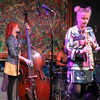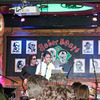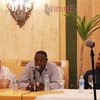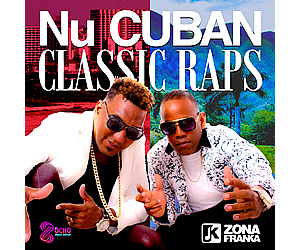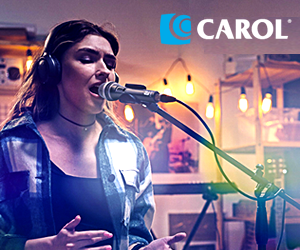Indice - Table of contents
New Stuff[hide]
Reportes: From The St... : Jazz Plaza ...
Fotos: Tom Ehrlich : Irakere 50th Annivers...
Fotos: Tom Ehrlich : Irakere
Resenas: Joey Altruda Presents: El Gran ...
Reportes: From The St... : Cubadisco 2...
Timbapedia: 09. Interviews -... : Carlos del Pino ...
Fotos: Tom Ehrlich : 2023 Monterey Jazz Fe...
Fotos: Tom Ehrlich : 2023 Monterey Jazz Fe...
Fotos: Tom Ehrlich : 2023 Monterey Jazz Fe...
Fotos: Tom Ehrlich : 2023 Monterey Jazz Fe...
Grupos: Tirso Duarte
Grupos: Tirso Duarte : Discography
Grupos: Charanga Habaner... : 8. El bla bla bla
Grupos: Pupy y los que S... : Tirso Duarte
Photos of the Day [hide]
The Roots of Timba - Part II - Sigue aguajeando Manolo
The CA-718 Session
| job | title | composer | rhythm | LP - EPA |
| CA718 | Mi socio Manolo | Juan Crespo Maza | gu-s | none? |
| CA718 | Se perdió mi amor | Juan Creso Maza | gu-s | |
| CA718 | Canto a la felicidad | Enrique Lazaga | gj-s | |
| CA718 | Amor no dejes que te olvide | Enrique Lazaga | b-smb | |
| CA718 | Hoy mi día triste | Juan Crespo Maza | b | |
| CA718 | Déjame demonstrarte | Ramiro Reyes | b | |
| CA718 | Y se baila así | Enrique Lazaga | s-bt | |
| CA718 | Que se sepa bien, mi amor | Juan Crespo Maza | gu-s | |
| CA718 | Quién dice? | Juan Crespo Maza | rt-dal |
197? Ritmo Oriental- Mi socio Manolo (composer: Juan Crespo Maza)
xx0x 0xxx 0xx0 xxx0 2-3 rumba clave
0xx0 0xx0 0xx0 0xx0 güiro (Enrique Lazaga)
0x0x xxx0 x0x0 xx0x bass tumbao -- MIDI
bass: Humberto Perera
source: La historia de la Ritmo, Vol. 1
notes: The main tumbao is an exhilarating example of something we'll call "motivo gear" when we get to Volume II. In motivo, other instruments double the bass tumbao, turning it from accompaniment to one of the principal musical themes. In this case, not only the piano, but also the string section take up the addictive figure, which was later famously paraphrased by Conjunto Libre in the Nuyorican classic Llora timbero. At the end of our excerpt is a wicked set of bloques played over the motivo tumbao. Also note that the tempo is now over 120 bpm, well into guaguancó territory.
The cuerpo of Manolo continues and extends the trademark style of bloques and tempo changes that we encountered earlier in Sabroseao con la Ritmo.
0xxx 00x0 xxx0 xx0x
0xxx 00x0 xxx0 xx0x bass tumbao for cuerpo
0xxx 0xxx 0xxx 0xxx bloque (con efecto)
0x0x 0x0x xxxx xxxx audio -- MIDI
The guy laughing is Pedro Calvo, who sang briefly with La Ritmo before joined Los Van Van in late 1974 or early 1975.
Our last excerpt, the transition from the cuerpo to the montuno section, is a great example of Enrique Lazaga's güiro playing and his absolute mastery of tempo. The end of the cuerpo is 116 bpm and the montuno section is 122 bpm. It's not the fact that it changes tempo -- it's the adrenaline rush that results from the way that it changes! Listen to the excerpt again, concentrating on the güiro. Genius.
197? Ritmo Oriental- Se perdió el amor (Juan Crespo Maza)
xx0x 0xxx 0xx0 xxx0 2-3 rumba clave
0xx0 x0x0 x0x0 xxxx audio - MIDI example
bass: Humberto Perera
source: La historia de la Ritmo, Vol. 1
Se perdió el amor is la Ritmo's third classic recording in its new style, the most correct term for which is probably "nueva onda de Areíto". Regardless of what we call it, we can identify at least four qualities that it shares with LVV's early songo and Irakere's batún-batá: 2-3 rumba clave, a very fast tempo (this one tops out at a sizzling 125 bpm), guaguancó-influenced congas and drums, and of course, the approach to the bass tumbao, the feature which most consistently ties our three groups together: a melodic figure that hits the downbeat of the 2-side, followed by a syncopated series of upbeats and offbeats.
The most striking thing about this particular bass tumbao is the unusually long rest before it repeats. Our MIDI example (comprised of only bass, clave and güiro) sounds empty at this point and lacks swing. No such problem occurs in the audio example, where the strings and percussion fill the hole left by the bass tumbao in many wonderful ways.
In the case of the percussion, this occurs effortlessly because of the inherently contrapuntal or "conversational" nature of Cuban music. The idea of one instrument playing in the space left by another is built into the fabric of the musical style, from the call and response of the coro and lead vocalist, to the interlocking mambo horn sections, right down to the nuts and bolts of the basic rhythm section parts and their folkloric predecessors.
A perfect example of this is that timba kick drum pattern we suggested memorizing and filing away for future reference:
xx0x 0xxx 0xx0 xxx0 clap (2-3 rumba clave)
0xx0 xxxx x0xx 0x0x sing or tap foot (timba kick drum template)
The kick and clave are in constant conversation, never coming together during the entire cycle.
 Listen again to the first MIDI example and focus on the big hole that Humberto leaves. Now listen to MIDI example 2, which is even slower, and adds the open tones of the tumba. The "conversation" between Claro's open tumba tones and Humberto's bass makes the passage sound much more balanced.
Listen again to the first MIDI example and focus on the big hole that Humberto leaves. Now listen to MIDI example 2, which is even slower, and adds the open tones of the tumba. The "conversation" between Claro's open tumba tones and Humberto's bass makes the passage sound much more balanced.
xx0x 0xxx 0xx0 xxx0 2-3 rumba clave
xxxx xx00 xxxx xx0x open tumba tones
0xx0 x0x0 x0x0 xxxx bass tumbao - MIDI example 2
As we said, this tendency towards conversation is "built-in". The congas fill the gaps in the clave and since this type of bassline marks the clave, it's only natural that the congas and bass will also tend to sound like their talking to each other.
As if to help us underscore the point, the arranger, Juan Crespo Maza, provides us with a passage in a distinctly non-Cuban style. As we've noted, the North American influence is much more subtle in Ritmo Oriental than in LVV or Irakere, but the cuerpo's B-section is a major exception, using a "walking bassline" as you'd expect to hear in swing jazz, and bluesy elements in the melody and chord progression.
0x0x 0x0x 0x0x 0x0x walking bass
One of the most useful ways to look at rhythm and clave orientation is to break the 16 possible pulses into categories. The common names for them are less than perfect. Call them what you will, but look for the logic in the x's and 0's.
0xxx 0xxx 0xxx 0xxx main beats
0xxx xxxx 0xxx xxxx strong beats, "front beats", "downbeats"
xxxx 0xxx xxxx 0xxx backbeats
xx0x xx0x xx0x xx0x upbeats
x0x0 x0x0 x0x0 x0x0 offbeats
The "walking bass" consists of all the main beats and upbeats and its mirror image is the changüí tres part, which is comprised almost entirely of offbeats.
0x0x 0x0x 0x0x 0x0x walking bass
x0x0 x0x0 x0x0 x0x0 changüí tres (source)
What these parts do have in common is that neither jazz nor changüí has clave. In clave music, as we go about studying bass, piano, string, vocal and horn parts, we'll find that the key to their clave orientation lies in the way they jump from one stream of pulses to the other. With this in mind, let's go back to Humberto's bass tumbao:
xx0x 0xxx 0xx0 xxx0 2-3 rumba clave
0xx0 x0x0 x0x0 xxxx audio - MIDI example
He begins on the downbeat, waits, and then jumps on the offbeat train, staying there until the next clave cycle.
In our next excerpt the piano and strings drop out, creating an effect that's akin to a timba gear change, but created in the opposite way. In a typical timba gear change the bass stops playing tumbao while the piano continues. In this case, it's the other way around. Also note that Claro's part of the conversation is much more improvised and that Daniel Díaz also gets in on the action.
It's easy for arrangers to come up with creative variations for rhythm section parts which have a natural call and response built into their structures, but in the case of the bass, piano, and string parts in songo, charanga, salsa and timba, all three parts follow the same fairly rigid rules of construction: they all resolve heavily on the downbeat of the 2-side, they all have about the same number of notes, and they all follow the same general roadmap of clave-aligned upbeats and offbeats. In this case, a lack of rhythmic counterpoint is built into the traditional parts, and thus, it's quite a trick to avoid being redundant. When you're studying the bass, or trying to invent a bass tumbao, there's a tendency to focus in on that one part, but to hear it from an arranger's point of view, try stepping back and giving equal attention to the bass and string section -- and the piano if you can hear it in la Ritmo's mixes.
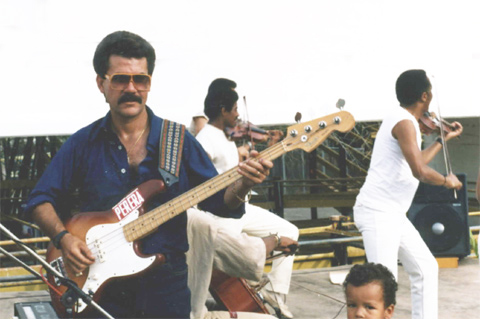 Humberto Perera with RO's string section of cello and 3 violins
Humberto Perera with RO's string section of cello and 3 violins
In terms of instrumentation, Ritmo Oriental is very much a pure charanga in the tradition of the early danzón orquestas, Arcaño, and Aragón: bass, piano, flute, and a miniature chamber orchestra of cello and several violins. RO's string players play with exquisite tone and intonation -- something which is made much more difficult by the elaborate dance moves which were the original inspiration for the espectáculos later made so famous by David Calzado with Charanga Habanera.
String and piano parts will be covered in other sections of this book, but for now, let's just take a quick look at how the guajeos of Se perdió are cleverly constructed to lock in rhythmically with the bass tumbao. As the energy level of the arrangement rises and falls, the strings rotate between three rhythm patterns, each of which fills not only the large space at the end of the bass tumbao, but also the first backbeat.:
xx0x 0xxx 0xx0 xxx0 2-3 rumba clave
0xx0 x0x0 x0x0 xxxx bass
0xxx 0xx0 x0x0 0x0x guajeo 1
0xxx 00x0 x0x0 0x0x guajeo 2
0x0x 00x0 x0x0 0x0x guajeo 3
After this, we'll avoid the temptation to analyze every string guajeo in a section devoted to bass tumbaos, but as you study each bass part, make sure to listen to how it interacts with strings, and the piano if you can hear it! Just as the congas and güiro tend to be overmixed relative to the drums, the strings tend to dominate the piano in Ritmo Oriental's mixes.
When we get to timba, we'll find that the role of the string guajeo has been largely unsurped by the new breed of incredibly inventive piano tumbaos, but the 80s witnessed a major renaissance of great string writing at the hands of La Ritmo, Van Van, Maravilla de Florida, Orquesta Típica Juventud, Aliamén and many others. Of the timba arrangers who do still use strings, Formell is still going strong, but perhaps cleverest is Manolito Simonet.
1998 - Manolito y su Trabuco: Llegó la música cubana (source)
xx0x 0xxx 0xx0 xxx0 2-3 rumba clave
0x0x xxx0 xxx0 0x0x bass
x0x0 0xxx x000 x00x strings (start on last 2 pickups)
0000 x0x0 x0x0 x000 piano (start on last 2 pickups)
audio
MIDI - full speed
MIDI - slow (MIDI by Osiris Martínez)note: The slower MIDI file gets progressively slower to highlight the subtle interactions between the 3 parts.
197? Ritmo Oriental- Canto a la felicidad (Enrique Lazaga)
xx0x 0xxx 0xx0 xxx0 2-3 rumba clave
0xx0 x0x0 x0x0 x0x0 bass - MIDI example
bass: Humberto Perera
source: La historia de la Ritmo, Vol. 1
notes: This bass tumbao is rhythmically identical to the previous one, Se perdió el amor, except that it adds the final two offbeats, which serve as pickups to the downbeat and changes the feel significantly. The tempo ranges from about 83 to 89 bpm - normal for salsa and timba, but unusually slow for the songo era. As with most of these early Ritmo Oriental arrangements, gear change effects involves removing the piano and strings, but not the bass.
What Year Was It Again?
| job | title | composer | rhythm | LP - EPA |
| CA718 | Mi socio Manolo | Juan Crespo Maza | gu-s | none? |
| CA718 | Se perdió mi amor | Juan Creso Maza | gu-s | none? |
| CA718 | Canto a la felicidad | Enrique Lazaga | gj-s | none? |
| CA718 | Amor no dejes que te olvide | Enrique Lazaga | b-smb | none? |
| CA718 | Hoy mi día triste | Juan Crespo Maza | b | none? |
| CA718 | Déjame demonstrarte | Ramiro Reyes | b | none? |
| CA718 | Y se baila así | Enrique Lazaga | s-bt | none? |
| CA718 | Que se sepa bien, mi amor | Juan Crespo Maza | gu-s | compilation? |
| CA718 | Quién dice? | Juan Crespo Maza | rt-dal | compilation? |
Mi socio Manolo, Se perdió el amor, and Canto a la felicidad were all recorded for the CA-718 session - probably in 1972 - but the recordings are lost. What we've been listening to are 1974 recordings from the compilation CD La historia de la Ritmo, Vol. 1 which contains RO's 1974 LP and their 1975 LP, minus the boleros. Got that? Now, the next three songs from the mysterious CA-718 session were all boleros, and I've yet to find anyone who has them or has heard them. This brings us to track 7, Y se baila así, and the recording we'll be hearing is from 1975.
It's amazing to note how many of these songs are written by the güiro player! In the rare field of percussionist/songwriters, it's hard to think of anyone other than Giraldo Piloto who's written more songs than Enrique Lazaga and and Y se baila así is one of his best -- it's packed with the kind of magical little moments that great tracks are made of.










